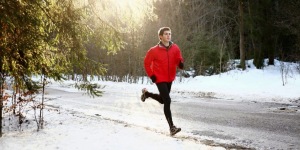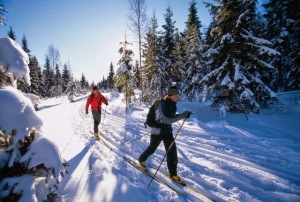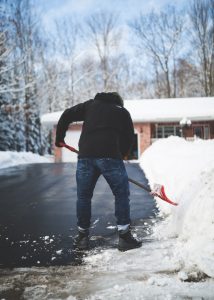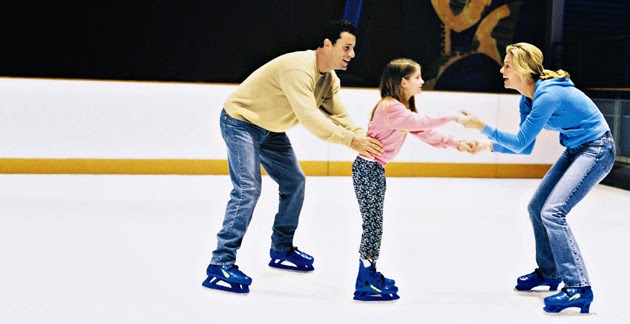Winter Injuries: Ice Skating
 |
| askmen.com |
Injuries caused by ice skating vary depending on what type of skating you do. A competitive skater may suffer from repetitive strain injuries such as tendonitis from performing the same action over and over again. Figure skaters often sustain injuries from falls as they push themselves to try more and more difficult jumps and turns. Muscle strains are also common among competitive skaters because they are working so hard at going faster or jumping higher.
Recreational skaters most often sustain injuries from falling. These injuries are often to the wrist, hand or arm from trying to break your fall. They can also involve back injuries caused by falling on your backside. This can cause compression of vertebral discs as well as muscle injuries.
If you suffer an injury while skating, chiropractic care, and/or massage therapy just might be the thing to get you back on your skates again as soon as possible.
Hypothermia
Hypothermia occurs when there is a rapid decrease in your body’s temperature. Hypothermia starts with mild to strong shivering, numb hands, goose bumps and quick and shallow breathing. Once the body temperature drops more it progresses to stumbling, confusion, and the lips, ears and toes may become blue. The third stage of hypothermia involves violent shivers, difficulty speaking and sluggish thought processes. It is almost impossible to walk at this point.
To avoid hypothermia make sure you dress properly when you spend time outdoors. It’s not only important to dress warmly but also to stay dry. Avoid moisture retaining fabrics such as cotton. Wear a fabric that wicks moisture away from the skin, like wool or synthetic fibres. In the air, most of the heat loss from your body comes from your head. Be sure to wear a hat!
Winter Running
Running in the winter can be a beautiful thing or a miserable experience. The way to prevent misery is to make sure you’re prepared for the weather outside with the proper gear.
It’s good to have a layer next to your skin that wicks the moisture away keeping you dry. The middle should be chosen with the days temperature in mind. If it’s a mild day keep the middle layer light. If it’s colder wear something a bit heavier. This should all be topped off with a wind breaking layer. There are a number of newer materials that break the wind but are also breathable.
Don’t forget your head, neck and hands. They need to be protected from winter too. With these three layers you should be protected from the wind, cold and wetness that come with winter. Your run should start off a bit crisp with you feeling comfortably toasty once you’re warmed up.
Ice cleats are a great way to keep your footing when walking on ice and compacted snow. These are available at specialty running stores like the Running Room. Talk to your health care provider before using them to run.
Don’t look down when you’re running, look ahead. You’re more likely to be off balance and take a spill if you’re looking down.
Finally, try to run lightly instead of tensing up and digging in. You’ll avoid a lot of aches, pains and muscle strains this way.
Cross Country Skiing Locations in the Area
 |
| lifesport-calgary.com |
Ottawa is a great place for cross country skiing with numerous trails in Ottawa and the Gatineau Park. Here are a few of the places you can go. Mooney’s Bay has about 5 km of groomed trails and is located in Ottawa. Nakkertok Nordik Cross Country Ski Club has 75 km of trails and is located in the Gatineau Hills near Cantley. Finally, there’s the Gatineau Park with over 200 km of trails. All of these locations have lit trails and offer lessons for varying levels, from the novice to the expert
Shoveling Ergonomics
 Shoveling is a necessity for many people in the winter time. It’s a common way to injure yourself because it’s a very physical activity that you only do for a small portion of the year. It can put a lot of stress on your back. Here are a few tips to help you avoid the aches and pains that can accompany shoveling.
Shoveling is a necessity for many people in the winter time. It’s a common way to injure yourself because it’s a very physical activity that you only do for a small portion of the year. It can put a lot of stress on your back. Here are a few tips to help you avoid the aches and pains that can accompany shoveling.
Warm up before shoveling. Take a 5 minute walk before you start.
Shovel often. This breaks the work load into smaller portions.
Push the snow instead of lifting it when possible. There are shovels specifically designed for pushing and easier lifting. If you have to lift snow, keep the shovel loads small. Don’t bend at the waist, use your knees to lift and keep the load close to your body with your arms spread out on the shovel. This gives you more leverage.
Use a shovel that feels comfortable for you. Your size and strength will determine the shovel that you should be using.
Take your time. Rushing causes mistakes and mistakes can be painful.
Don’t throw the snow over your shoulder or off to the side. This can cause your back to twist and could result in injury. It’s better to walk to the location where you want to dump the snow than it is to throw it.


